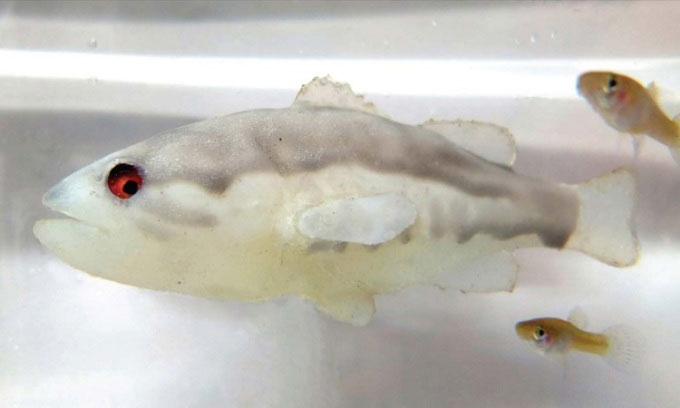Robot fish resembling bass have become a source of fear for mosquito fish (Gambusia holbrooki) – a species that drives native freshwater fish and wildlife to extinction.
In a study published on December 16 in the journal iScience, a team of researchers created robots to scare off mosquito fish. They describe how this fear alters the behavior, physiology, and reproduction of mosquito fish, potentially aiding in the control of this invasive species.

Robot fish (left) mimicking bass, the natural predator of mosquito fish (right). (Photo: Giovanni Polverino)
To combat the invasive fish, the international research team, comprised of biologists and engineers from Australia, the USA, and Italy, relied on the natural predator of mosquito fish, the largemouth bass (Micropterus salmoides). They developed a type of robot fish that mimics the appearance and movements of real bass. With the aid of computer vision, the robot fish attack when they detect mosquito fish approaching the tadpoles of the endangered species (Litoria moorei) that are threatened by mosquito fish in the wild. Overcome with fear and stress, the mosquito fish exhibit wary behavior, lose weight, change shape, and experience reduced reproductive abilities, all of which impact their survival chances.
“Mosquito fish are one of the 100 worst invasive species in the world. Current methods to eradicate them are very costly and time-consuming,” said Giovanni Polverino, the lead author of the study at the University of Western Australia. “This globally harmful species poses a serious threat to many aquatic animals. Instead of killing them one by one, our method provides a better solution for controlling mosquito fish. We have created a robot that can scare mosquito fish without affecting other surrounding wildlife.”
With the presence of robot fish, mosquito fish tend to stay closer together and spend more time in the center of the test area. This effect remains consistent in natural environments outside the aquarium. The frightened fish also become less active, eat less, and remain motionless for longer periods, showing signs of anxiety that last for weeks after encountering the robot.
For tadpoles, the food source for mosquito fish, the presence of the robot brings better benefits. While mosquito fish typically explore their environment visually, tadpoles have very poor eyesight. They cannot see the robot clearly. Because the robot alters the behavior of mosquito fish, tadpoles are no longer preyed upon and are more willing to venture outside the test area.
After five weeks of interaction between mosquito fish and the robot, the research team found that mosquito fish expended more energy fleeing rather than reproducing. The bodies of male fish became thinner and more elongated, with stronger muscles concentrated in their tails. They also had lower sperm counts, while female fish laid lighter eggs, impacting the survival of the entire species.
However, according to Maurizio Porfiri, co-author of the study at New York University, the robot fish are not yet ready to be released into the wild. The research team still needs to overcome numerous technical challenges. First, they plan to test their method in small ponds in Australia, where two endangered fish species are threatened by mosquito fish.


















































